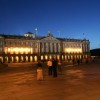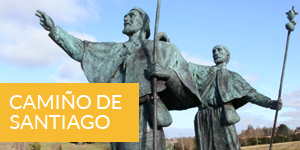- Accede I
- Regístrate I
- carrito
Los siglos XIX y XX
El siglo XIX
Además de las intervenciones destinadas a dar un mayor decoro al tejido urbano, durante el siglo XIX se producen en Santiago dos operaciones de carácter público y de fuerte impacto en su fisonomía: la construcción del Mercado o plaza de Abastos y del parque de la Alameda. En este siglo desaparecen las murallas de la ciudad.
El siglo XX
El proyecto más ambicioso y de mayor impacto sobre la todavía embrionaria trama urbana de la ciudad moderna, durante la primera mitad del siglo XX, fue la Residencia de Estudiantes, que daría origen al Campus Sur. La actividad constructiva de la ciudad se va a centrar en ese campus durante las décadas de los años 60 y 70, un tiempo marcado por las tensiones y especulaciones inmobiliarias que dan origen al actual Ensanche.
Un hecho histórico decisivo para la ciudad de Santiago fue la constitución en 1980 de la Comunidad Autónoma de Galicia y su designación como sede de la Xunta de Galicia (Gobierno gallego) y de las instituciones autonómicas, convirtiéndose en capital política y administrativa de Galicia. Además, Compostela experimentó un fuerte impulso como ciudad cultural, comercial y de servicios, imponiéndose una redefinición del papel de la ciudad y de sus infraestructuras.

















